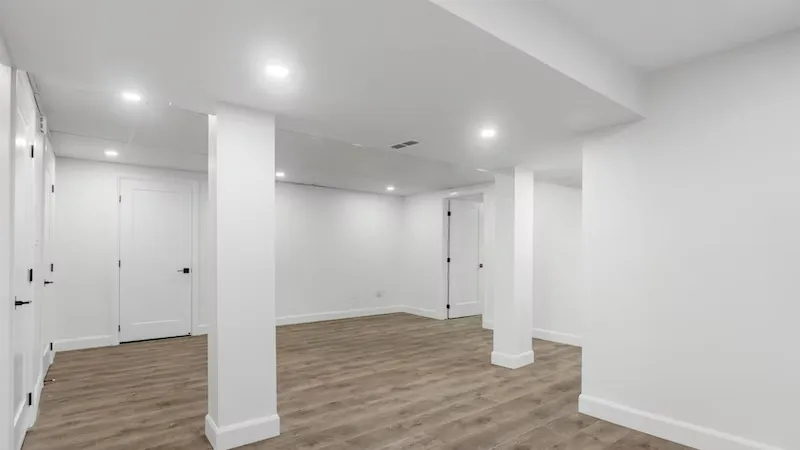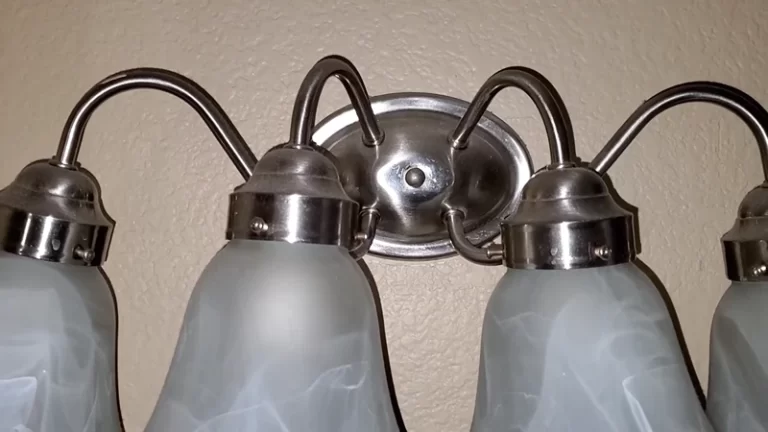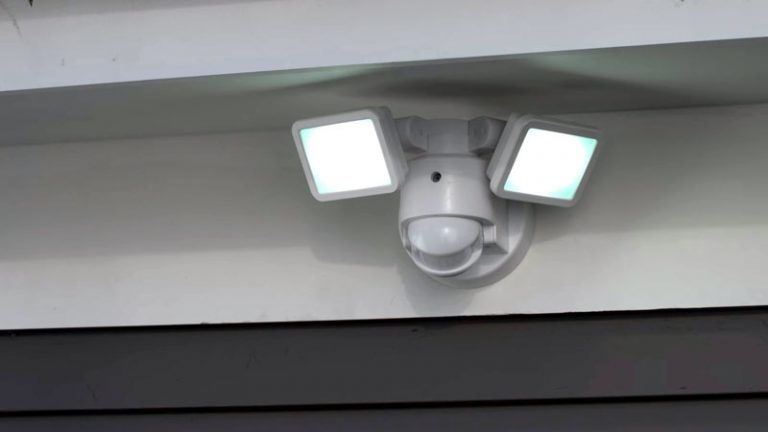Can I Put All Basement Lights on One Circuit?

Proper electrical wiring is essential for ensuring the safety and functionality of any living space, and this is especially true for basements. One important aspect of basement electrical wiring is the arrangement of circuits, specifically whether or not all the lights in the basement are on one circuit.
In this article, we will delve into the pros and cons of having all basement lights on one circuit, as well as provide guidance on how to install separate circuits for lights and outlets if desired.
You'll Learn About
Is It Okay to Have All Basement Lights on One Circuit?
It is generally recommended to have lights and outlets on separate circuits in a basement, or any room for that matter. The main reason for this is to ensure that if a circuit becomes overloaded and trips the breaker, only one type of load (either lights or outlets) is affected.
If both lights and outlets are on the same circuit, a circuit overload could result in both the lights and outlets going out, which could be inconvenient or even potentially dangerous if the outlets are being used to power essential equipment.
Additionally, having separate circuits allows for more flexibility in terms of the types of loads that can be connected to each circuit. For example, a circuit dedicated to lighting can handle lower wattage bulbs, while a circuit dedicated to outlets can handle heavier loads such as appliances or electronics.
If you are finishing your basement and currently have all the lights on one circuit, it may be a good idea to consider installing separate circuits for the outlets. This can be done by running new wiring from the electrical panel to the outlets, and installing a new circuit breaker in the panel to protect the circuit.
Be sure to follow all local building codes and safety regulations when doing any electrical work. It is always a good idea to consult with a licensed electrician if you are unsure of how to proceed.
Advantages of Separate Circuits for Lights and Outlets
Reduced Risk of Circuit Overload
One advantage of having separate circuits for lights and outlets in a basement is the reduced risk of circuit overload and inconvenience. If all the lights in a basement are on the same circuit as the outlets, a circuit overload could result in both the lights and outlets going out.
This could be inconvenient, especially if the outlets are being used to power essential equipment such as a sump pump or a home security system.
More Flexibility
Having separate circuits allows for more flexibility in terms of the types of loads that can be connected to each circuit, as a circuit dedicated to lighting can handle lower wattage bulbs while a circuit dedicated to outlets can handle heavier loads such as appliances or electronics.
This can help to prevent circuit overload and ensure that the electrical system in the basement is functioning properly.
Disadvantages of Having All Basement Lights on One Circuit
Safety Hazards
One disadvantage of having all basement lights on one circuit is the potential for safety hazards if both the lights and outlets go out in the event of a circuit overload. If the outlets in the basement are being used to power essential equipment, a sudden loss of power could potentially be dangerous.
For example, if a sump pump is powered by an outlet on the same circuit as the lights, and the circuit overloads and trips the breaker, the sump pump may stop working and the basement could flood. Similarly, if a home security system is powered by an outlet on the same circuit as the lights, and the circuit overloads and trips the breaker, the security system may not function properly and the home could be at risk.
Limit the Ability to Power Heavy Loads
Additionally, having all the lights in a basement on one circuit can limit the ability to power heavy loads on the same circuit. For example, if you want to use an outlet in the basement to power a large appliance such as a washing machine or dryer, you may not be able to do so if the outlet is on the same circuit as the lights.
This is because the circuit would likely be overloaded if both the lights and the appliance were connected to it. By having separate circuits for lights and outlets, you can ensure that heavy loads can be safely powered without causing any issues with the electrical system.
How to Install Separate Circuits for Lights and Outlets in a Basement
If you are considering installing separate circuits for lights and outlets in your basement, there are several steps you will need to take to ensure a safe and successful installation.
Obtain Any Necessary Permits
First, it is important to obtain any necessary permits and consult with a licensed electrician before beginning the project. Electrical work can be dangerous, and it is essential to follow all local building codes and safety regulations to prevent accidents or damage to your home.
Guidance From a Professional
Once you have obtained any necessary permits and received guidance from a professional, you can begin the process of installing separate circuits. This typically involves running new wiring from the electrical panel to the outlets and installing new circuit breakers in the panel to protect the circuits.
Run the New Wiring
To run the new wiring, you will need to locate the electrical panel and determine the route the wiring will take to reach the outlets. You will then need to carefully measure and cut the wire to the appropriate length, strip the insulation from the ends, and attach the wire to the outlets using wire connectors.
Once the wiring is in place, you can install the new circuit breakers in the panel and connect the wiring to them.
Safe and Successful Installation
There are a few tips to keep in mind to ensure a safe and successful installation of separate circuits for lights and outlets in your basement:
- Make sure to turn off the power to the electrical panel before working on the wiring or circuit breakers.
- Follow all instructions and safety precautions provided by the manufacturer of the circuit breakers.
- Use caution when working with electrical wire and avoid touching live wires.
- Test the circuits and outlets to ensure they are working properly before restoring power to the panel.
By following these steps and working carefully, you can successfully install separate circuits for lights and outlets in your basement and improve the safety and functionality of your home’s electrical system.
Tips for Installing Separate Circuits for Lights and Outlets
Here are a few more tips that may be helpful when installing separate circuits for lights and outlets in a basement:
Plan Ahead
Before starting the project, take some time to carefully plan out the layout of the circuits and outlets in the basement. This can help you determine the most efficient and effective way to run the wiring and install the circuit breakers.
Use Appropriate Wire and Circuit Breaker Sizes
Be sure to use the correct wire size and type for the circuits you are installing, and use circuit breakers with the appropriate amperage rating to protect the circuits. Using the wrong wire or circuit breaker size can be dangerous and can cause problems with the electrical system.
Label the Circuits and Outlets
Once the circuits and outlets are installed, it can be helpful to label them to make it easier to understand which outlets and lights are on which circuit. This can be especially useful if you have multiple circuits in the basement.
Test All the Outlets and Lights
After the installation is complete, be sure to test all the outlets and lights to ensure they are working properly. This can help you catch any issues that may have occurred during the installation process and allow you to fix them before restoring power to the panel.
Use Gfci Outlets in Damp or Wet Areas
If you have any outlets in damp or wet areas of the basement (such as near a sump pump or a utility sink), consider using GFCI (ground fault circuit interrupter) outlets. These outlets are designed to shut off power in the event of a ground fault, which can help to prevent electrical shocks and fires.
Can I Put All Basement Lights on One Circuit? What to Know
Yes, you can put all basement lights on one circuit, but it’s important to ensure the total wattage does not exceed the circuit’s capacity. Overloading a circuit can lead to tripped breakers or even electrical fires. Always consult an electrician if you’re unsure about your home’s electrical system.
While you’re working on your basement lighting, consider other electrical projects. For example, if your light isn’t working but has power, troubleshooting the issue can save time and money. Additionally, learning how to splice 3-wire Christmas lights can make holiday decorating easier.
Conclusion
In conclusion, having separate circuits for lights and outlets in a basement has several benefits including reduced risk of circuit overload and inconvenience, increased flexibility in terms of load types, and improved safety.
While it may require some additional effort and possibly the assistance of a licensed electrician, installing separate circuits can be well worth it for the added peace of mind and convenience it provides. We encourage homeowners to consider installing separate circuits in their own basements to ensure the safety and functionality of their electrical system.


